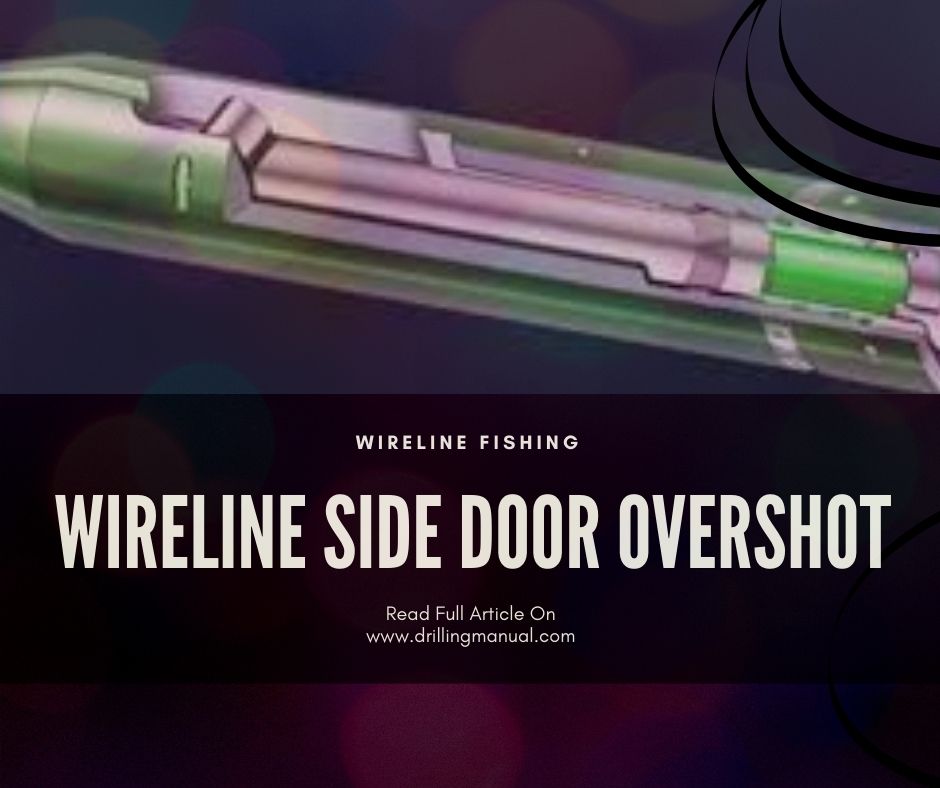
The side door overshot method is another option for freeing a stuck logging tool. In this method, the line is not cut and a rope socket overshot is not required. However, cut & thread fishing is typically the best option.

Applications
The Bowen Series 160 fishing overshot is only recommended for fishing in cased-hole environments and is run on tubing or drill pipe. This method is preferred in shallow-cased holes.
The side door overshot is not recommended when fishing:
- for a radioactive logging tool
- in a directional well
- in a stuck line situation
- at a depth below 3,000 ft.
- with a large OD quick connect that will not pass through the grapple.
Preparing The Side Door Overshot
First, you must secure the cable with the T-bar cable clamp. Then hang the sheave to one side in the rig derrick to provide clearance for the block. Prepare the overshot to go in the hole using the following procedure.
- Loosen the set screws and remove the grapple control ring.
- Remove the grapple by rotating it clockwise.
- Remove the side door by removing the socket head screws in the overshot..
- Connect the overshot to the tubing or drill pipe and tighten it with tongs.
- Lay the cable through the side door opening so it passes over the roller and down through the lower center part of the overshot.
- Replace the side door and secure it with the socket head screws.
- Select the correct size grapple and thread it around the cable.
- Slide the grapple into the lower end of the overshot and rotate it counterclockwise into the body’s threads.
Note: The basket grapple has an enlarged slot, which allows it to be threaded around the cable. The grapple control is held in place by set screws.
- Replace the control ring and tighten the set screws holding it.
Running In a Hole With Side Door Overshot
- Lock the rotary table after the overshot is dressed and made up on the pipe. This is necessary since the cable will be resting on one side.
- Apply normal tension (1,000 pounds) on the cable and set the winch brake.
- If necessary, a segment of slip inserts may be removed to allow the cable to ride.
Note: This step is important for avoiding damage to the cable.
- Go in the hole slowly and use caution when setting the drilling slips to avoid pinching the cable.
Caution: Do not allow the pipe to rotate.
- Descend slowly, watching the weight indicator for any increase in tension indicating the fish is engaged. The pipe tally will indicate when the overshot approaches the fish.
- Flush the overshot by circulating before engaging the fish.
Engaging the fish
- Pick up and watch for slack in the cable, indicating that the fish is in the side door overshot.
- When the tool is free, pull out at the weak point and spool it on the truck.
Note: The weak point is the connection where the wire line is attached to the logging tool.
- Pull out of the hole with the fish.
- Release the overshot cautiously at the surface to avoid damage to the fish.